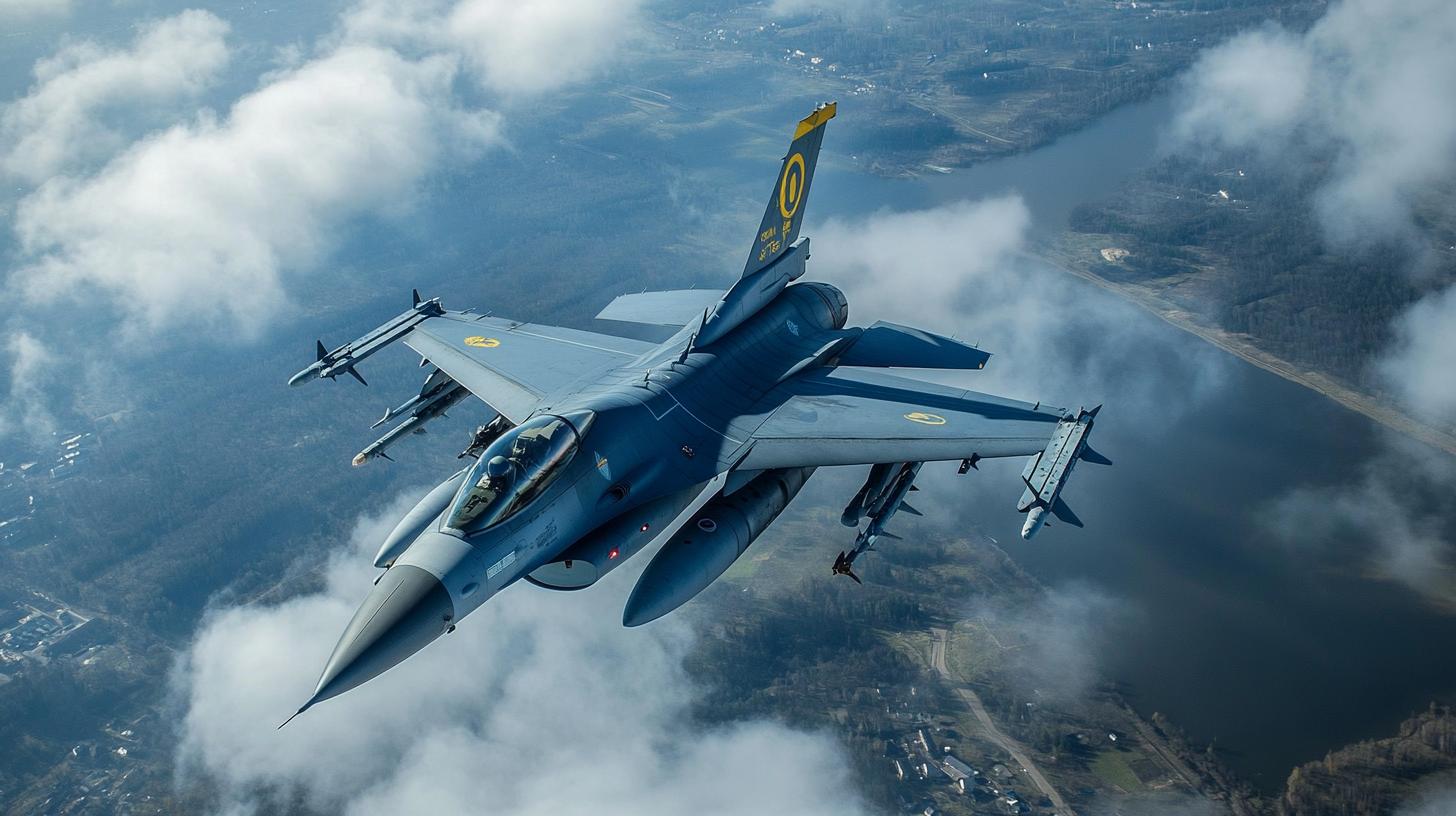Ukraine is actively seeking to bolster its air combat capabilities by integrating the Link 16 tactical network into the F-16 fighter jets it receives from Western allies. This move could potentially revolutionize the Ukrainian Air Force by allowing real-time data exchange between F-16s and notable NATO assets like the RC-135W Rivet Joint and E-3A AWACS, boosting situational awareness and operational efficacy.
The United States, however, remains cautious. The possibility of these advanced systems falling into Russian hands, should an F-16 be captured or shot down, poses significant security concerns. This hesitancy stems from the potential exposure of critical NATO cryptographic codes, threatening broader alliance security.
Meanwhile, discussions within NATO committees, as reported by Turkish sources, suggest that the integration of Link 16 with Ukrainian F-16s is not entirely off the table. Such integration would require substantial aircraft modifications, increasing the challenge. Yet, if successful, it would create a seamless battlefield interface among NATO platforms, vastly improving Ukraine’s ability to conduct precision strikes and coordinate movements.
Turkey, an experienced F-16 operator, voices concerns over geopolitical implications similar to past incidents involving the capture of sensitive military technology. The risk of Link 16 components ending up in Russian or Iranian hands could necessitate sweeping changes within NATO’s electronic warfare protocols.
The deliberations reveal a difficult choice: enhancing Ukraine’s defense capabilities while ensuring the safety of NATO’s technological secrets. The decision could drastically alter the dynamics of the conflict, should the security of Link 16 be assured at every operational level.
Will Advanced Tactical Networks Transform Modern Warfare?
In a significant leap for future air combat, the integration of the Link 16 tactical network into Ukraine’s F-16 fighter jets is more than a simple technological upgrade—it’s a step toward reshaping modern warfare. The potential benefits are vast, as the capability to share real-time data amongst advanced aircraft and NATO support assets like the E-3A AWACS could redefine aerial strategy and coordination. However, this initiative also poses intricate challenges and raises numerous questions regarding security and technological integrity.
Implications for Technology and Warfare
The integration of Link 16 exemplifies how digital advances in communication technology are impacting military tactics and operational capabilities. This network allows for high-speed transmission of data, enabling rapid decision-making and enhanced situational awareness. The seamless connectivity could give Ukrainian pilots the same cooperative air warfare capability that NATO forces employ, creating a more unified and responsive defense front.
However, such integration has considerable implications. If accomplished securely, it might propel not only Ukraine but other allied nations into a new era of interconnected warfare, setting a precedent for military technology sharing. Yet the inherent risks, especially of sensitive technologies falling into adversarial hands, remind us of the delicate balance between technological advancement and the safeguarding of intelligence.
Advantages and Challenges
Link 16’s capabilities present undeniable advantages. The system can potentially streamline missions, improve precision in targeting, and provide an effective counter to sophisticated aerial threats. For Ukraine, these benefits could significantly bolster its defense posture against external aggressions.
However, there are several challenges. Modifying F-16s to incorporate Link 16 needs substantial technical enhancements and infrastructure, possibly diverting resources from other critical areas. Furthermore, there’s the ever-present risk of espionage or technological capture, which could lead to NATO’s secure communications being compromised. This worry is not unfounded, as history shows that captured technology has been reverse-engineered to erode military advantages.
Controversies Surrounding Integration
The discourse within NATO and among geopolitical experts often centers on the balance between innovation and caution. Is there a foolproof method to secure digital and technological assets against potential threats? The controversy largely lies in the hypothetical scenarios: if an F-16 equipped with Link 16 is captured or crashes, the ramifications could extend beyond Ukraine’s borders, possibly necessitating shifts in NATO’s electronic warfare strategies.
What Does the Future Hold?
Can this integration lead to broader technology sharing among non-NATO states, or will fear of compromise limit such advances to only the closest allies? As Ukraine pushes forward, will similar technological partnerships be offered to other nations under threat, expanding a club of technologically superior defense systems?
This evolving technology presents a dichotomy between the need to evolve militarily and the imperative to protect sensitive technologies. While technology plays a crucial role in modern warfare, maintaining the integrity and security of these systems is equally vital.
For further insights into NATO and its technological strategies, visit NATO. For more on military technology advancements, explore Janes.
The decision to integrate such advanced capabilities thus remains a double-edged sword, poised to reshape military engagements while concurrently testing the resilience of security protocols. How NATO, Ukraine, and allies navigate this intricate dance of defense could define modern warfare for years to come.







